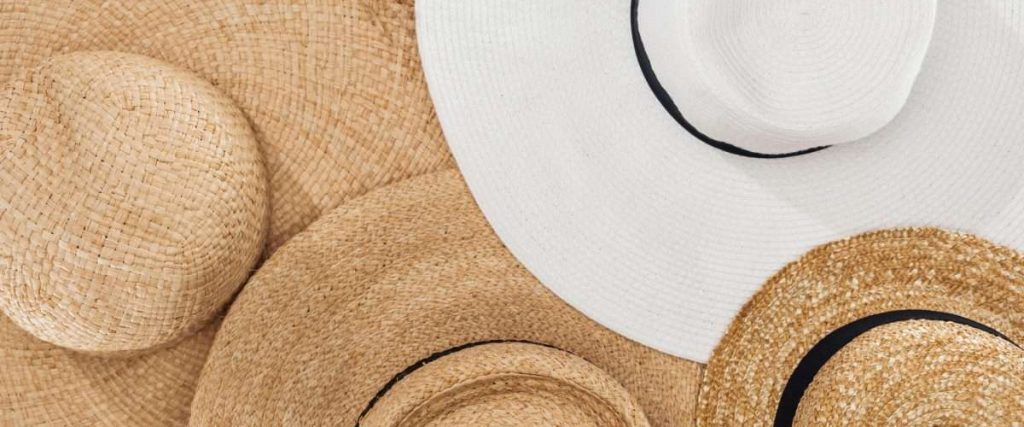Sun Protective Bucket Hats vs. Regular Hats: Which Is Better for Sun Safety?

In the quest for effective sun protection, two types of hats often come under scrutiny: sun protective bucket hats and regular hats.
The importance of safeguarding against harmful ultraviolet (UV) radiation cannot be overstated. It is therefore crucial to discern which type of hat offers superior protection.
This post will delve into a detailed comparison between these two hat types, exploring their respective merits in terms of sun safety. By maintaining an objective stance, it aims to provide readers with an informed perspective on this matter.
Sun Protective Bucket Hats: The Basics
Sun protective bucket hats, often referred to as SPF hats, are specifically designed for sun safety. Unlike regular baseball caps and hats, they provide a wide brim that shields the face, eyes, and other vulnerable areas of the body from harmful sun rays.
Materials and Construction
Typically, these hats are made from materials like:
- Straw
- Polyester
- Nylon
- Cotton blends
These materials have a tight weave to block out the sun. Some may even have a special coating to help deflect UV rays.
UV Protection Rating
An important feature of SPF hats is their UV protection rating. This rating measures how effectively the hat blocks UV radiation. Most sun protective bucket hats have a UPF (Ultraviolet Protection Factor) rating of 50+, which means they block 98% of UVA and UVB rays.
During sunny days or times when you're outside for long periods, wearing an SPF hat can significantly reduce your exposure to the sun's damaging rays compared to regular baseball caps or hats.
Despite their look being different from traditional baseball caps or straw hats, they serve a crucial role in protecting against skin damage during outdoor activities.
Regular Hats: What You Need to Know

"Regular" hats, in this context, refer to common caps that we wear for a variety of reasons. These could be fashion statements or simple needs like keeping the head warm or minimizing glare from the sun.
Different designs and materials are used in crafting these hats. For example:
- Baseball caps are typically made from cotton twill, polyester, or a blend.
- Fedora hats are often crafted from wool felt.
- Straw hats for beach use are woven from different types of straw.
Despite the wide array of options, regular hats usually lack specific features designed for UV protection. A number of them might shield different areas, such as parts of your face and ears, from direct sunlight. However, they do not offer comprehensive sun protection.
Remember that while these caps provide some level of shade, they are not specifically designed to block out harmful UV rays. Therefore, when considering sun safety, it is essential to look beyond regular hat use and consider options with added UV protection features.
Factors Influencing Hat's Sun Protection Ability
The sun protection ability of a hat depends on several factors. The material plays a crucial role. Hats made from tightly woven fabric provide better SPF and block harmful UV rays more effectively.
- Cotton: Provides some SPF but can lose effectiveness when wet.
- Polyester: Offers excellent sun protection even when wet.
Brim width also matters for sun safety. A wider brim provides more shade, protecting the face and neck from sun damage.
Color also influences how much heat is absorbed or reflected by the hat:
- Dark colors absorb heat.
- Light colors reflect heat.
Additional Features
Some hats come with added features to enhance their sun protection:
- Neck flaps: Protects the sensitive skin on the back of your neck.
- Vents: Allows moisture to escape, keeping you cool under intense sunlight.
Proper Fit and Coverage
A properly fitting hat that covers your head adequately is essential for effective sun protection. It should not be too tight to cause discomfort or too loose to fall off easily in breezy conditions.
Remember, no matter how high the SPF rating of a hat is, it won't protect you effectively if it doesn't fit well or cover a large area. So always choose a hat that fits you well and provides ample coverage for maximum sun protection.
Hat Types and Their Contribution to Skin Cancer Risk
Different types of hats offer varying degrees of sun protection, which can impact skin cancer risk. The most protective hats provide wide brims and high Ultraviolet Protection Factor (UPF) ratings.
Common Hat Types
- Bucket Hats: These offer good coverage but may have lower UPF ratings.
- Baseball Caps: Popular but provide minimal coverage, increasing skin cancer risk.
- Sun Protective Bucket Hats: Specifically designed for sun safety with high UPF rating.
Improper use or non-use of hats significantly contributes to skin cancer risk. For instance, wearing a baseball cap does not protect the neck or ears, areas often exposed to harmful UV rays.
It's important to note that even high-UPF-rated hats like sun protective bucket hats can't fully protect if not worn consistently during peak sunlight hours (10 a.m.–4 p.m.). Neglecting hat usage during these hours leaves the skin vulnerable to UV damage, regardless of hat type.
Here are some tips for effective hat use:
- Choose a hat with a wide brim and high UPF rating.
- Wear your chosen hat consistently during peak sunlight hours.
- Don't rely solely on your hat; combine it with other sun safety measures like sunscreen and sunglasses.
Remember: No single type of hat guarantees complete protection against UV rays and subsequent skin cancer risk. Consistent use, combined with other sun safety practices, is key to effective protection.
Bucket Hats: UV Protection and Comfort

Bucket hats offer comprehensive UV protection, covering not just the head but also the face, ears, and neck areas. These are regions often overlooked by other hat styles. The design of bucket hats incorporates wide brims and optional neck flaps that effectively shield against solar UVR.
- UV Protection: The UPF rating measures a fabric's effectiveness against both UVA and UVB rays. Many bucket hats come with a UPF rating of 50+, meaning they block out nearly 98% of harmful UV rays.
- Coverage: With their all-around brims, bucket hats provide more coverage than regular caps or visors. This is crucial for outdoor activities where exposure to the sun is prolonged.
Comfort factors such as breathability, adjustability, and lightweight design encourage consistent wear for optimal sun safety benefits from bucket hats.
- Breathability: Most bucket hats are made from breathable materials like cotton or wool, preventing overheating.
- Adjustability: An adjustable fit ensures the hat stays on even during windy conditions or active outdoor pursuits.
- Weight: Lightweight designs reduce discomfort or strain from long-term wear.
Despite these advantages, some potential drawbacks might deter people from choosing bucket hats over regular ones. Limited peripheral vision due to wide brims could be an issue for some users. Fashion concerns may also arise, as bucket hats have a distinctive style that might not appeal to everyone.
In terms of sun safety, though, the superior UV radiation protection offered by bucket hats makes them an excellent choice for effective defense against harmful solar UVR while engaging in outdoor activities.
Practicality and Seasonality of Bucket Hats
Bucket hats offer a high degree of practicality that extends beyond beach or summer use. Their versatile design elements, such as detachable neck flaps and adjustable cords, make them suitable for various conditions:
- Detachable neck flaps provide extra sun protection.
- Adjustable cords ensure the hat stays on in windy situations.
These features enhance their year-round utility.
The seasonal aspect is another factor influencing the choice between bucket hats and regular hats. For example, winter versions of bucket hats come with ear flaps to protect against cold winds.
Despite these seasonal variations, one crucial point remains consistent: wearing a hat during daylight hours is key to achieving sun safety benefits. Whether it's a bucket hat or a regular one, consistency in wear plays a significant role in ensuring effective protection from harmful UV rays.
In terms of sun safety:
- Both types block direct sunlight.
- Bucket hats offer additional protection due to their wider brims and optional neck flaps.
- Consistent wear is necessary for both types to achieve maximum sun protection.
To sum up, both bucket hats and regular hats can provide effective sun protection if worn consistently during daylight hours. However, the practical design features of bucket hats may give them an edge over regular ones under certain conditions or seasons.
Fashion Trends Impacting Hat Choices
Fashion trends significantly sway individuals' hat choices. People often select hats based on current styles, colors, brands, and even hair compatibility. This holds true for functional items like sun protective headwear.
A few fashion-forward brands have managed to merge style with function. They've incorporated high-UPF-rated fabrics into trendy designs, offering consumers the best of both worlds:
- Chic sun protective bucket hats in pastel shades.
- Stylish beach hats with high UPF ratings.
- Cool baseball caps made from UV-resistant material.
However, not all 'fashionable' sun-safe products live up to their claims. Some marketing gimmicks promote 'sun-safe' hats that are ineffective or non-compliant with safety standards.
To avoid falling prey to these tactics:
- Always check labels before purchasing.
- Look for claims backed by trusted authorities.
- Be wary of products without clear safety ratings.
Remember, while different styles may appeal to your fashion sense and hair type, the ultimate goal is sun protection. Choose wisely!
Choosing the Right Hat for Sun Safety

Choosing the right hat can make all the difference. Here are some key considerations:
- Brim Size: Wide-brimmed hats like sun hats and fishing hats provide more protection than narrow-brimmed options. The larger the brim, the greater the shade and thus more coverage against harmful solar radiation.
- Color: Dark-colored hats absorb more UV rays than light-colored ones. However, they might also be hotter to wear on a sunny day.
- Fabric: Opt for tightly-woven fabrics, which offer better sun protection compared to loosely-woven materials.
Making an informed choice involves understanding your needs and preferences:
- Consider your lifestyle. If you're often outdoors during peak sun hours, a sun protective bucket hat may be a better option for you.
- Don't just follow trends or advertisements blindly. Use online resources and tools to compare different types of hats based on their UV protection factor.
It's crucial to remember that wearing a hat is part of broader sun safety measures:
- Regularly replace your hat, as its protective qualities can diminish over time.
- Ensure your hat is clean and well-maintained for maximum effectiveness.
Wrapping Up Sun Safety and Hat Choices
In the quest for optimal sun safety, both sun protective bucket hats and regular hats have their merits.
However, considering factors such as UV protection, comfort, practicality, seasonality, fashion trends, and contribution to skin cancer risk, it is evident that sun protective bucket hats offer a more comprehensive package. They provide an effective shield against harmful UV rays while ensuring comfort and style.
Making informed decisions about your sun protection gear can significantly impact your skin's health. Don't compromise your safety for the sake of fashion or convenience.
Opt for a hat like the sun protective bucket hat that offers superior protection without sacrificing comfort or style. Explore the sun protective bucket hats at Rayward Apparel to elevate your sun safety and style today. Shop now!
FAQs
- Why are sun protective bucket hats better than regular hats?
Sun protective bucket hats are designed with materials that effectively block out harmful UV rays. Their wide brims also provide additional coverage for the face and neck areas, which are often exposed to sunlight.
- Are all bucket hats sun-protective?
No, not all bucket hats offer UV protection. It's important to check the product details before purchasing to ensure it has been tested and rated for its ability to block UV radiation.
- Can I wear a regular hat during peak sun hours?
While any hat provides some shade, it may not effectively protect against UV radiation. For maximum protection during peak sunlight hours, consider wearing a hat with a certified UPF (Ultraviolet Protection Factor) rating.
- Do darker colored hats offer better sun protection?
Darker colors generally absorb more UV radiation than lighter ones; however, the material of the hat plays a significant role in determining its level of sun protection.
- How often should I replace my sun protective hat?
The lifespan of a sun-protective hat depends on its quality and how frequently it's used, but generally speaking, you should consider replacing it every few years or if you notice signs of wear and tear.







